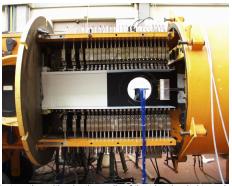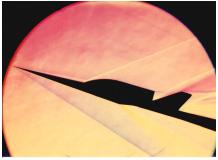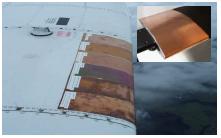Experimental Fluid Mechanics

Several wind tunnels covering subsonic, transonic and supersonic flows with test section dimensions ranging from 0.15 x 0.15 m² up to 1 x 1 m² and two water tunnels, one of which is a closed circuit water tunnel with a test section of 1 x 1.5 m² at a maximum velocity of 4 m/s, are available. Moreover, a test rig for certification of safety valves at a maximum pressure of 100 bar is set up.

The experimental flow analysis is based on conventional and up-to-date measuring techniques. Two- or three-dimensional density distributions are determined using Mach-Zehnder interferometry or holographic interferometry. Classical optical methods like the shadow, schlieren, and color schlieren technique are used to visualize flow phenomena such as shock waves, shock boundary-layer interactions, and separations. Various specifications of the particle-image velocimetry (PIV) method are applied to measure velocity distributions of internal and external flow problems. For example, using holographic PIV the three-dimensional unsteady velocity field within the cylinder of a 4-valve piston engine during intake and compression stroke could be determined. The objective of the project was the analysis of the evolution of the vortical flow field and its impact on mixing, i.e., on fuel consumption and pollution. Classical techniques to measure pressure distributions and velocities at single characteristic points like laser-doppler anemometry (LDA) and hot- wire anemometry as well as methods for flow visualization like oil pattern and smoke techniques are used to investigate fundamental flow phenomena and engineering problems from areas like, e.g., car and building aerodynamics. Heat transfer is measured using liquid crystals. The development of robust multisensor hot-films enables to detect phenomena like separation and transition under laboratory and free flight conditions.


Furthermore, multiphase flows are studied using stereoscopic imaging techniques and digital image processing. Mass transfer, bubble cloud dynamics and turbulence production are the areas of main interest. High-speed recording and sample reconstruction of multiple bubble paths are used to develop statistical models for the turbulent flow field.
